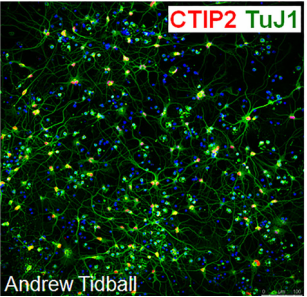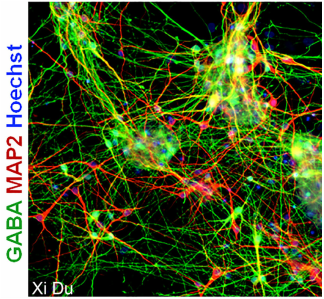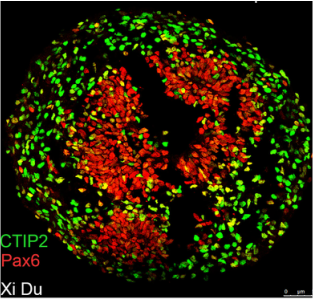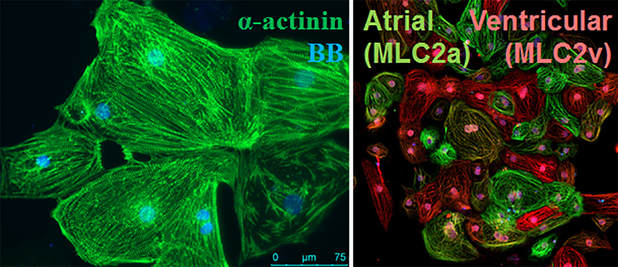iPSC Models of Epilepsy
Part of the laboratory focuses on understanding epileptogenic mechanisms of genetic early infantile epileptic encephalopathies (EIEEs) using patient-derived cell generated from induced pluripotent stem cell (iPSCs). We generated one of the first patient-derived iPSC models of an EIEE, Dravet syndrome (DS), caused by mutations in the voltage-gated sodium channel alpha subunit gene SCN1A and associated with severe seizures, cognitive regression and a high incidence of SUDEP (Sudden Unexpected Death in Epilepsy). Using DS iPSC-derived neurons, we identified a novel potential epilepsy mechanism (Lu et al, 2013) and now have a platform to screen drugs for precision therapy. Similar iPSC modeling is ongoing in our lab for 8 other genetic epilepsies, including using cerebral organoid cultures, as well as studies of SUDEP using iPSC-derived cardiac myocytes from DS and SCN8A-Related EIEE. We are also part of an NIH U54 Epilepsy Centers Without Walls grant, entitled Epilepsy Multi-Platform Variant Prediction (EpiMVP), that aims to develop a tool to predict the pathogenicity of epilepsy gene variants of uncertain significance (VUS).
Human iPSC-derived cardiac myocytes (Huilin Shi)
|
Epilepsy Multi-Platform Variant Prediction (EpiMVP) Epilepsy Center Without Walls
|





